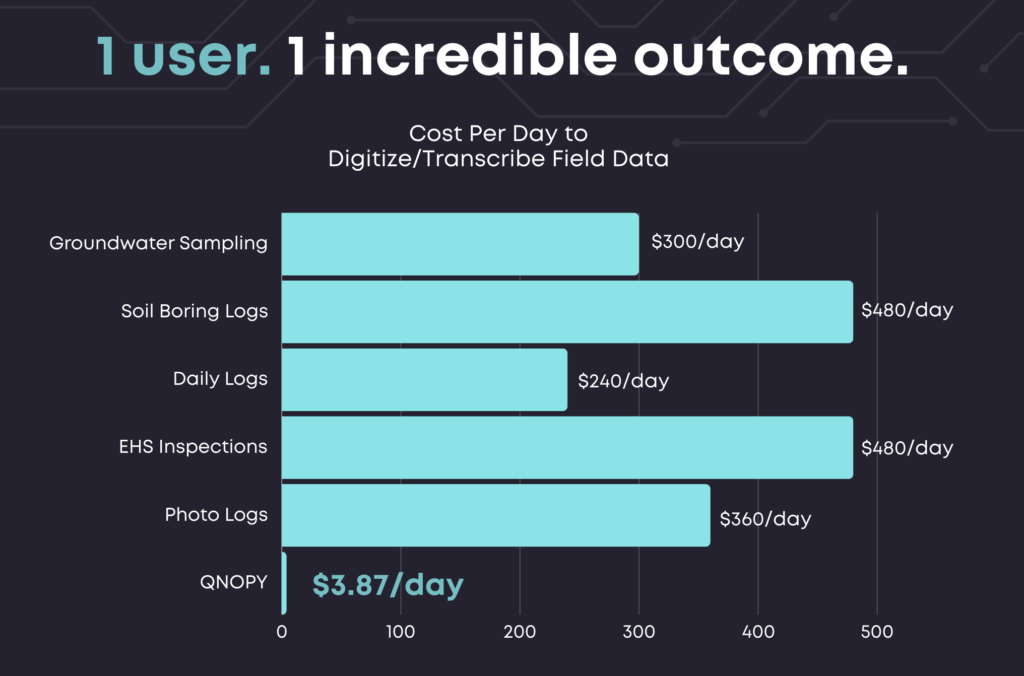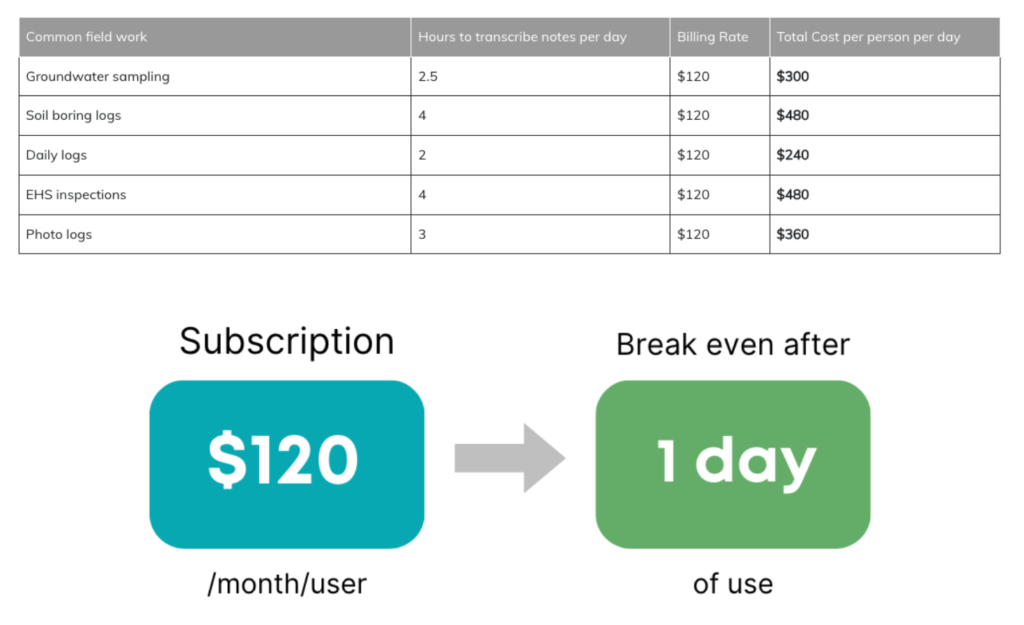
The march of progress in the construction and environmental sectors has long been burdened by the weight of paper. In 2024 and beyond, there’s little reason to stick with paper field forms. Let’s explore the differences between paper vs digital field forms…
Benefits of Digital Field Forms
Streamlining Operations
The leap from paper to digital forms is like shifting from a horse-drawn plow to a tractor. It’s an upgrade in speed, efficiency, and productivity. With the QNOPY app, information can be captured, transmitted, and processed in the blink of an eye, eliminating the sluggish pace of paper documentation. This rapid flow of information accelerates every aspect of operations—from on-site data collection to office-based reporting—saving hours that can be reallocated to other pressing tasks.
Everyday Cost Savings
Transcribing handwritten notes into digital systems is not just time-consuming, it’s an expensive routine that can significantly affect a company’s finances. Consider the scenario where skilled professionals, who are often billed at rates like $120 per hour, are assigned to data transcription tasks. The cost implications are substantial. If a skilled employee spends two hours per day transcribing notes, that’s 10 hours in a standard workweek. At a billing rate of $120 per hour, the weekly cost to the company is $1,200. Over a month, this adds up to $4,800, and in a year, the cumulative cost reaches a staggering $57,600. This is a conservative estimate—many projects may require more than two hours of transcription daily, potentially doubling or even tripling these figures.
See the chart below to see a breakdown of potential transcription costs for various forms:

Precision in Data
Handwritten forms are prone to errors and omissions. Digital forms significantly reduce these risks by providing clear, legible, and complete data entries. Features like dropdown menus and pre-populated fields ensure that data is consistent and accurate. The ability to include photos and GPS tagging also enhances the richness of the data collected.
Cutting Operational Costs
The tangible costs of paper are often ignored when considering paper vs digital field forms. Paper requires printing, storage, and management—all of which incur expenses. Digital forms eliminate these costs, presenting a cost-effective alternative that slashes spending on materials and administrative tasks. The savings can be substantial.
Reducing Error-Related Expenses
Mistakes are costly, and again, paper forms are prone to errors. Inaccurate data can lead to incorrect decisions, rework, and wasted materials. Our digital forms can minimize these risks with features that promote accuracy, such as automatic calculations and validations – entirely customized to your project’s needs.
Data Organization
Alongside the QNOPY field application, you also get an extensive data management platform to organize and store all your documents. Don’t get caught up with trying to build your own storage and organizational systems. Our out-of-the-box data management features make accessing files a breeze. This streamlining of procedures leads to a leaner operation with reduced labor costs.
Gaining a Competitive Edge
Finally, the adoption of digital forms signals a company’s forward-thinking mindset. It’s a competitive differentiator that can sway clients who prioritize efficiency, innovation, and sustainability. It also aids in attracting a workforce that is tech-savvy and values employers who are at the forefront of technological adoption. Don’t get left in the dust – the digital shift has already begun. Instead, become a leader in your field and differentiate yourself in the marketplace today.
